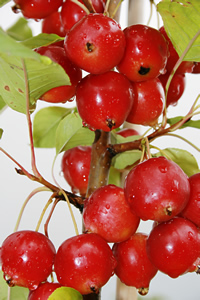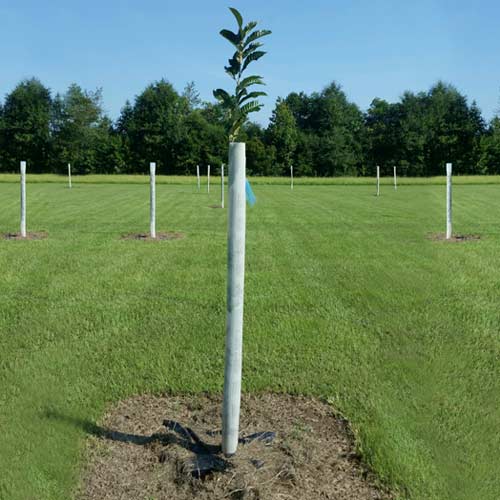 In the past we have recommended adding a slow release fertilizer to the holes at time of planting. I am somewhat backing off of this statement because of recent test that I have conducted on my own property at planting. We always mixed a 3 month slow release fertilizer in the pots at the nursery when planting with no ill effects on the trees.
This season I used the same method as always on my property but used 12 month and at a higher rate than I generally recommend. We had ample rain fall for most of the season but we did have a one month period in the area where rain was scarce and I lost several of my trees. I am contributing it directly to the continual release of fertilizer while not adequate water was available to the plant. I still feel that a low dose of 12-6-6 will work fine but by low dose I mean a tablespoon.
With that said this is my new recommendation. At time of planting dig a larger than normal hole to soften the surrounding soils. This will allow for the root system to easily spread. If you are able to water the 1st fertilizer as previously suggested. If not do not fertilize at time of planting, my suggestion would be to pick the sight you plant trees and prepare before planting by adding at least 3-5 pounds of lime in a 4×4 area and about ½ pound of blood meal. If you feel the need to fertilize the 1st tree about 1 foot from the trunk in early March and again in mid June only if you are getting adequate rain fall. 2nd year about 1 cup at the same times increasing each season by ½ cup no more than one cup and no more than 5 pounds on a mature tree.
If you are in an area where fire blight is a problem or has been a problem cut your application rates in 1/2 on Apples and Crabapples. Pears do not require lots of fertilizer so if you have any doubts about pears do not fertilize at all. Treat persimmons much like you would pe
In the past we have recommended adding a slow release fertilizer to the holes at time of planting. I am somewhat backing off of this statement because of recent test that I have conducted on my own property at planting. We always mixed a 3 month slow release fertilizer in the pots at the nursery when planting with no ill effects on the trees.
This season I used the same method as always on my property but used 12 month and at a higher rate than I generally recommend. We had ample rain fall for most of the season but we did have a one month period in the area where rain was scarce and I lost several of my trees. I am contributing it directly to the continual release of fertilizer while not adequate water was available to the plant. I still feel that a low dose of 12-6-6 will work fine but by low dose I mean a tablespoon.
With that said this is my new recommendation. At time of planting dig a larger than normal hole to soften the surrounding soils. This will allow for the root system to easily spread. If you are able to water the 1st fertilizer as previously suggested. If not do not fertilize at time of planting, my suggestion would be to pick the sight you plant trees and prepare before planting by adding at least 3-5 pounds of lime in a 4×4 area and about ½ pound of blood meal. If you feel the need to fertilize the 1st tree about 1 foot from the trunk in early March and again in mid June only if you are getting adequate rain fall. 2nd year about 1 cup at the same times increasing each season by ½ cup no more than one cup and no more than 5 pounds on a mature tree.
If you are in an area where fire blight is a problem or has been a problem cut your application rates in 1/2 on Apples and Crabapples. Pears do not require lots of fertilizer so if you have any doubts about pears do not fertilize at all. Treat persimmons much like you would pe 

